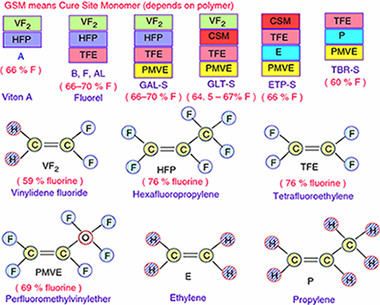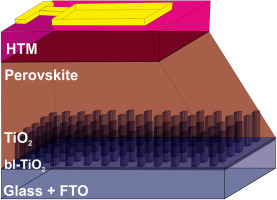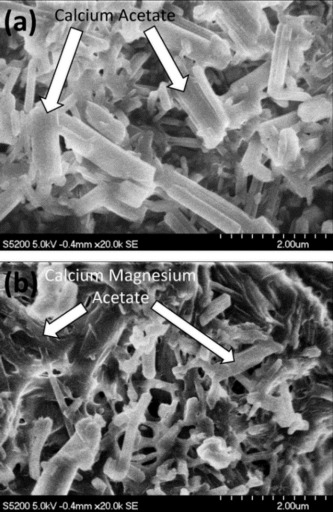Artículos SCI
2017
2017
Reactividad de Sólidos
New findings on thermal degradation properties of fluoropolymers
Liu, SE; Zhou, WL; Yan, QL; Qi, XF; An, T; Perez-Maqueda, LA; Zhao, FQJournal of Thermal Analysis and Calorimetry, 128 (2017) 675-685
Show abstract ▽

In this paper, the thermal degradation properties of Viton A and Fluorel are investigated by both isoconversional and combined kinetic analysis methods using non-isothermal thermogravimetry technique. It has been found that the heating rate has little affect on the degradation residue of Fluorel and Viton A, where around 1.3% char was formed for Fluorel and 3.5% for Viton A. Different from the literature, the decomposition of Viton A should be considered as an overlapped dehydrofluorination and carbon chain scission process, with activation energy of 214 +/- 11 and 268 +/- 13 kJ mol(-1), respectively. The effect of dehydrofluorination on degradation of Fluorel is not so significant due to low content of H, and hence, it could be considered as a single-step mechanism with average activation energy of 264 +/- 14 kJ mol(-1). The thermal stability of Fluorel is much better than that of Viton A, and the predicted half-life is around 218 min for Fluorel and 49 min for Viton A at 420 A degrees C, which are consistent with experimental values. If using a single-step model as in the literature for Viton A, its half-life at 420 A degrees C would be underestimated for > 20%.
Mayo, 2017 | DOI: 10.1007/s10973-016-5963-z
Nanotecnología en Superficies y Plasma
1-dimensional TiO2 nano-forests as photoanodes for efficient and stable perovskite solar cells fabrication
Salado, M; Oliva-Ramirez, M; Kazim, S; Gonzalez-Elipe, AR; Ahmad, SNano Energy, 35 (2017) 215-222
Show abstract ▽

During the last years, perovskite solar cells have gained increasing interest among the photovoltaic community, in particularly after reaching performances at par with mature thin film based PV. This rapid evolution has been fostered by the compositional engineering of perovskite and new device architectures. In the present work, we report the fabrication of perovskite solar cells based on highly ordered 1-dimensional vertically oriented TiO2 nano-forests. These vertically oriented porous TiO2 photoanodes were deposited by physical vapor deposition in an oblique angle configuration, a method which is scalable to fabricate large area devices. Mixed (MA0.15FA0.85)Pb(I0.85Br0.15)3 or triple cation Cs0.05(MA0.15FA0.85)0.95Pb(I0.85Br0.15)3 based perovskites were then infiltrated into these 1-dimensional nanostructures and power conversion efficiencies of 16.8% along with improved stability was obtained. The devices fabricated using 1D-TiO2 were found to be more stable compare to the classical 3-dimensional TiO2 photoanodes prepared by wet chemistry. These 1-D photoanodes will be of interest for scaling up the technology and in other opto-electrical devices as they can be easily fabricated utilizing industrially adapted methodologies.
Mayo, 2017 | DOI: 10.1016/j.nanoen.2017.03.034
Reactividad de Sólidos
Structure evolution in the LaMn1 − xFexO3 + δ system by Rietveld analysis
Cordoba, J. M.; Ponce, M.; Sayagues, M. J.Solis State Ionics, 303 (2017) 132-137
Show abstract ▽
The synthesis of LaMn1 − xFexO3 + δ (0 ≤ x ≤ 1) solid solutions perovskite powder was carried out using high-energy milling from the constituent oxides, and further crystallization by high temperature treatment. The compositions of the crystalline phases as a function of x were determined by X-ray powder diffraction using a Rietveld refinement. The relationship between composition and structure was covered. This showed that LaMn1 − xFexO3 + δ exists with the rhombohedral structure (R-3c, 167) only below x = 0.3 and with the orthorhombic structure (Pnma, 62) over x = 0.7. The rhombohedral phase coexists with the orthorhombic phase between 0.4 < x < 0.6.
Mayo, 2017 | DOI: 10.1016/j.ssi.2017.02.020
Reactividad de Sólidos
CO2 capture performance of Ca-Mg acetates at realistic Calcium Looping conditions
Miranda-Pizarro, J; Perejon, A; Valverde, JM; Perez-Maqueda, LA; Sanchez-Jimenez, PEFuel, 196 (2017) 497-507
Show abstract ▽

The Calcium Looping (CaL) process, based on the cyclic carbonation/calcination of CaO, has emerged in the last years as a potentially low cost technique for CO2 capture at reduced energy penalty. In the present work, natural limestone and dolomite have been pretreated with diluted acetic acid to obtain Ca and Ca-Mg mixed acetates, whose CO2 capture performance has been tested at CaL conditions that necessarily imply sorbent regeneration under high CO2 partial pressure. The CaL multicycle capture performance of these sorbents has been compared with that of CaO directly derived from limestone and dolomite calcination. Results show that acetic acid pretreatment of limestone does not lead to an improvement of its capture capacity, although it allows for a higher calcination efficiency to regenerate CaO at reduced temperatures (similar to 900 degrees C) as compared to natural limestone (>similar to 930 degrees C). On the other hand, if a recarbonation stage is introduced before calcination to reactivate the sorbent, a significantly higher residual capture capacity is obtained for the Ca -Mg mixed acetate derived from dolomite as compared to either natural dolomite or limestone. The main reason for this behavior is the enhancement of carbonation in the solid-state diffusion controlled phase. It is argued that the presence of inert MgO grains in the mixed acetate with reduced segregation notably promotes solid state diffusion of ions across the porous structure created after recarbonation.
Mayo, 2017 | DOI: 10.1016/j.fuel.2017.01.119
Nanotecnología en Superficies y Plasma
Non-enzymatic hydrogen peroxide detection at NiO nanoporous thin film-electrodes prepared by physical vapor deposition at oblique angles
Salazar, Pedro; Rico, Victor; Gonzalez-Elipe, Agustin R.Electrochimica Acta, 235 (2017) 534-542
Show abstract ▽

In this work we report a non-enzymatic sensor for hydrogen peroxide (H2O2) detection based on nanostructured nickel thin films prepared by physical vapor deposition at oblique angles. Porous thin films deposited on ITO substrates were characterized by X-ray diffraction analysis, scanning electron microcopy (SEMs), X-ray photoelectron spectroscopy (XPS) and electrochemical techniques such as Cyclic Voltammetry (CV) and Constant Potential Amperometry (CPA). The microstructure of the thin films consisted of inclined and separated Ni nanocolumns forming a porous thin layer of about 500 nm thickness. Prior to their use, the films surface was electrochemically modified and the chemical state studied by CV and XPS analysis. These techniques also showed that Ni2+/Ni3+ species were involved in the electrochemical oxidation and detection of H2O2 in alkaline medium. Main analytical parameters such as sensitivity (807 mA M(-1)cm(-2)), limit of detection (3.22 mu M) and linear range (0.011-2.4 mM) were obtained under optimal operation conditions. Sensors depicted an outstanding selectivity and a high stability and they were successfully used to determine H2O2 concentration in commercial antiseptic solutions.
Mayo, 2017 | DOI: 10.1016/j.electacta.2017.03.087
- ‹ anterior
- 194 of 420
- siguiente ›














